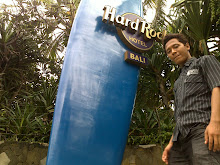3. OLED Monitor
Organic Light-Emitting Diode (OLED) or organic light-emitting diode is a semiconductor as a light emitting layer made of organic. OLED technology is used in elektroluminensi, such as the screen or sensor applications. This technology is known flexible with thinness which account for less than 1 mm.
OLED technology is an important tool in elektroluminensi. These technologies have the basic concept of the light beam generated by the device due to the applied electric field. OLED technology was developed to obtain a broad view, flexible, inexpensive and can be used as an efficient screen display for different purposes.
Number of colors of light emitted by the OLED devices evolve from one color to multi-color. This phenomenon is obtained by varying the voltage that is supplied to the OLED device so that the device has the prospect of becoming an alternative devices such as flat-screen display technology based on liquid crystals.
An important part of the OLED device is an electrode layer and a thin layer consisting of organic molecules as light-emitting both of which are arranged overlapping. Organic layer with a relatively simple technique that plays coating (spin coating) while dimendapkan electrode layer using evaporation techniques (evaporation). Electrode layers made of metal or semi-transparent transparent as Indium Tin Oxide (ITO) or aluminum (Al). Properties of transparent allowing light emitted from the device structure in an optimal exit
profit
1. The presence of OLED technology with a unique manufacturing process that shifts the position of LCD technology.
2. OLED display new and exciting. The screen is made of a combination of colors in transparent glass so thin that light and flexible.
3. OLED ability to operate as a light source that produces a bright white light when connected to a power source.
4. Low power consumption and are made of organic materials makes OLEDs as environment-friendly technologies.
5. Operational costs are relatively low and the assembly process is relatively simple compared to LCD. OLEDs can be printed onto a substrate in accordance with the technology of spray ink printer (inkjet printer).
6. It has a coverage area of the color, brightness, and viewing angles are very wide. OLED pixels directly emit light while using technology LCD back light (backlight) so it does not emit actual colors.
7. OLEDs have a faster reaction time. The LCD display has a response time of 8-12 milliseconds, while OLED is less than 0.01 ms.
8. OLED can be operated in a wider temperature limits.
shortage
1. OLED technology in Indonesia in general is still limited by several factors that should be developed further.
2. Technical problems persist OLED namely the organic material is limited, about 14,000 hours compared to other flat screens that can reach 60,000 hours. In 2007, the last period OLED developed to 198,000 hours.
3. Humidity can shorten the life of OLED. Materials in the OLED organic content can be damaged if exposed to water.
4. Development of the seal (improved sealing process) in OLED manufacturing practices can limit the display last time.
5. In a multi-color OLED devices present, the intensity of the light produced for a specific color not bright enough.
6. Prices of products which tend to be expensive so it is still not affordable by the general public.
quote : wikipedia.org
environmentteam.com














0 comments:
Post a Comment